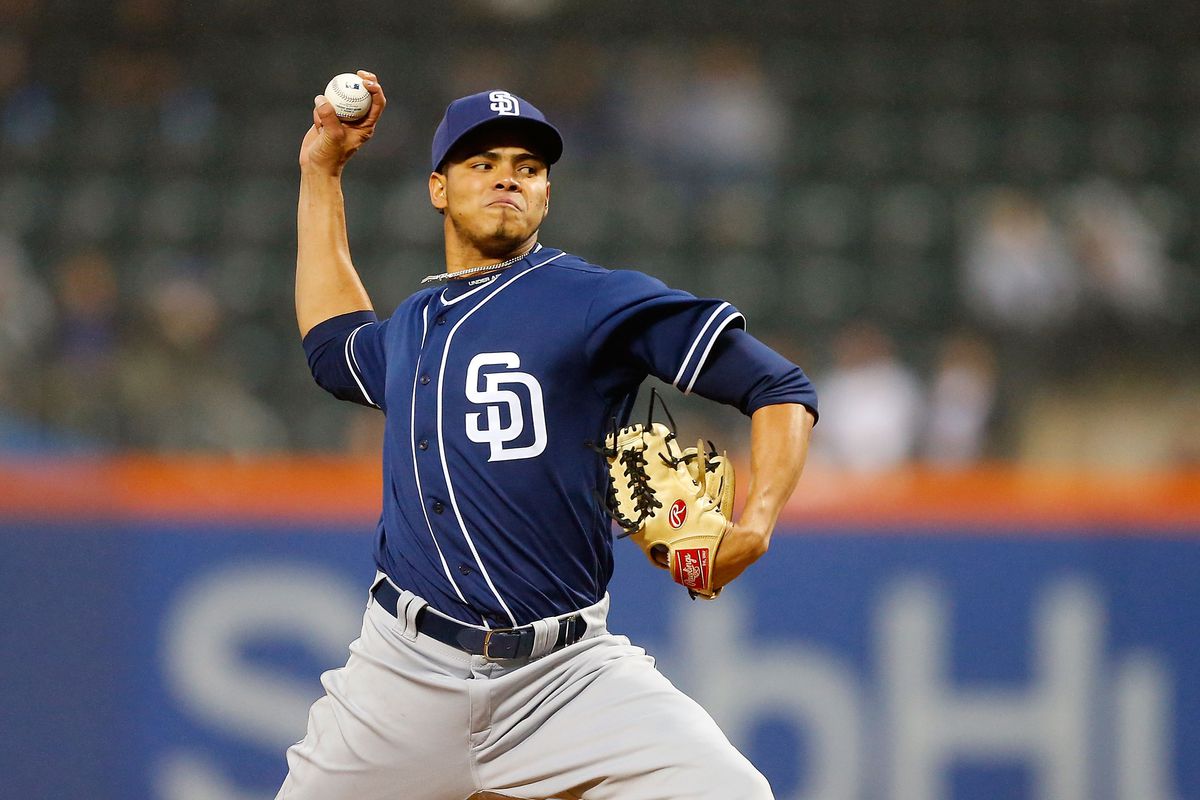Ahead of the Curve: “Bullpenning” & the San Diego Padres

Source: Mike Ehrmann/Getty Images North America

Let’s get a little weird.
San Diego Padres’ pitching hasn’t been great lately. In 2017, the team’s starters struggled to the tune of a 4.83 ERA with a 4.40 xFIP. The bullpen was a little bit better, posting a 4.49 ERA accompanied by a 4.24 xFIP. The Friars ranked 22nd in team ERA (4.63), 23rd in walks (554), and 19th in quality starts (67).
The teams 75 HBP last season was the second-most among the 30 clubs. They also gave up a lot of home runs. A lot. The 226 home runs the Padres gave up in 2017 was the fifth-worst mark in all of baseball. Some of this can be chalked up to inexperience, sure. I believe it to be a little bit deeper than that though. I am of the opinion that the Padres can make some adjustments to pitcher usage that could not only benefit the team short term but long term as well.
First, let’s take a quick look at the Padres’ current staff.
As of this writing, the San Diego Padres have 10 starting pitching options for five rotation spots. Only one pitcher has a guaranteed spot in this rotation; Clayton Richard.
Manager Andy Green listed Peoria newbie Bryan Mitchell as a near lock for the rotation as well, while also mentioning young righties Luis Perdomo and Dinelson Lamet as a couple pitchers who “…probably have legs up on other guys.” That leaves around three spots for eight pitchers if we are to assume that Perdomo and Lamet aren’t odds-on favorites for two of those spots. The other eight candidates, Colin Rea, Matt Strahm, Robbie Erlin, Tyson Ross, Jordan Lyles, and Chris Young aren’t exactly world beaters. Heck, half of these candidates are coming off of major injuries that forced them to miss significant time in 2017.
The bullpen is a different story as it is mostly made up of returning players such as Brad Hand, Kirby Yates, Craig Stammen, and Carter Capps. It is pretty safe to assume right-handed submariner Kazuhisa Makita will occupy a late-inning role with the ball club as well. If we look at the league-wide blueprint of carrying five starters and seven relievers, the Padres have two extra spots on their staff. Buddy Baumann, Brad Wieck, and Kyle McGrath will most likely be battling it out for the same role and Phil Maton will probably work his way into the picture as well.
A solid group, but we can’t settle for solid. In order to improve this staff’s short and long-term outlook, the Padres should adopt the strategy of “Bullpenning”. I know, I know, but please just hear me out. I first became enamored with the idea of Bullpenning when I came across it in Brian Kenny’s book “Ahead of the Curve” and it is basically a strategy that drops the idea that a pitcher needs to go seven innings in favor of multiple pitching changes and no true pitching roles. A strategy like this allows a manager more freedom to use pitchers in situations that give them a better chance to succeed. This strategy is more commonly used in the playoffs where starters have very short leashes and the best relievers are relied on to go multiple innings.
After spending hours looking at different sets of data on Fangraphs I came to the conclusion that this pitching staff would benefit greatly from Bullpenning. The main argument for Bullpenning is that starters get worse as they go through the lineup more than once and the data backs this claim up. Let’s take a look at each known rotation competitor’s numbers each time through the opponents’ lineups (as a starter).
1st time through the lineup:

2nd time through the lineup:

3rd time through the lineup:

(Note: Lamet and Strahm haven’t made enough ML starts to produce reliable results. Mitchell is included based on the assumption that he will be making the rotation per Andy Green.)
There is definitely a lot to take in here. For starters, most of the pitchers’ ERAs drastically increase as they go through the lineup more than once. Tyson Ross is really the only Padre starter that can be trusted to go through the lineup as his numbers are near identical the first two times through the lineup. The same can’t really be said for anyone else. What can be said is the pure dominance some of these pitchers flash the first time through the lineup. Now, this makes sense as hitters benefit greatly from multiple looks at a pitcher, and although I won’t go into detail on all of the stats right now, a quick glance at this data shows that pitchers get worse as the game goes on.
PAGE 2 LINK BELOW
Born and raised in Vista, Ryan has been a Padres fan since birth. Currently attending Palomar College, Ryan is trying his hand at expressing his passion for baseball through writing. There is no better life than the baseball life.
I think the Padres will use bullpenning…in spring training.
Thanks Ryan, for taking the time to collect the facts. Well Padre front office. Could have done this and saved a Whole lot of money and would have negated any need for two or three wins above replacement.
With what the Padres have as a potential staff, this type of rotation is the only possibility to become competitive, until/when the ” youth” arrive, and maybe the MLB rotation of the future. Facts are facts.